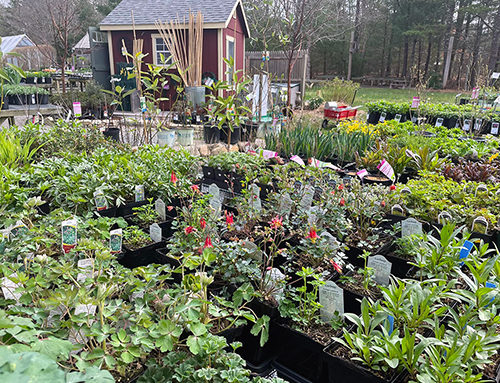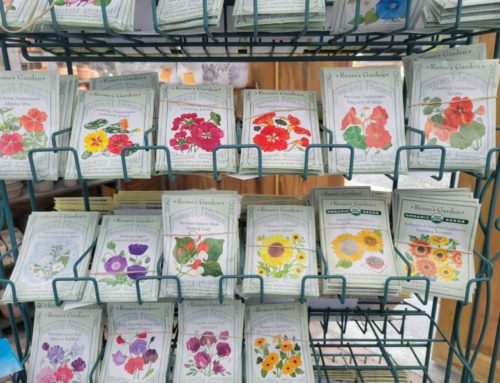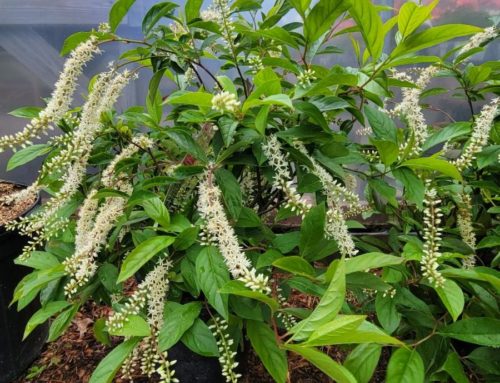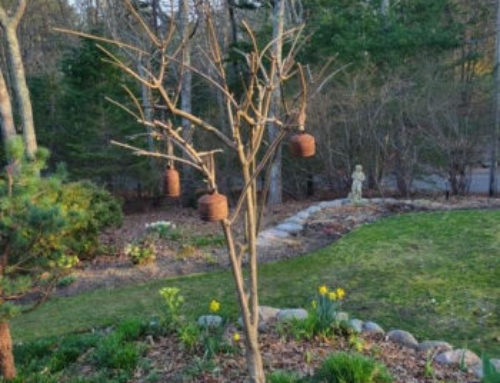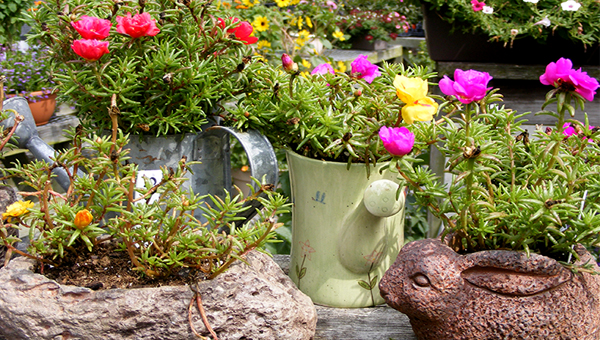
Let’s talk about those rascally rabbits that eat our treasured perennials and bulb plants as they emerge this time of year. During the winter rabbits feed on young shrubs and trees. These days we cruise the garden excited to see fresh greenery poking up out of the soil. Overnight juicy foliage can be eaten causing frustration and rage rivaling Elmer Fudd’s.
You could adopt a pacifist philosophy and live and let live. And that might be best for your blood pressure. But we spend significant time laboring in the garden and surrendering our assets, envisioning the lush, productive garden that will result. Hope and optimism are natural inclinations of gardeners. They are excellent qualities in facing many of life’s challenges. They are poor strategies for fighting garden pests.
If you have had a rabbit problem in the past, you will likely have a rabbit problem in your garden this year too. It’s time to go on the offensive with multi pronged attack and tactics may need to be adjusted between skirmishes.
Hope and optimism are natural inclinations of gardeners. They are excellent qualities in facing many of life’s challenges. They are poor strategies for fighting garden pests. We continue to hear sad tales of abundant bunnies damaging your plants.
Vegetable growers almost have to erect a fence. Most all commercial repellents are not safe to use on edibles. A metal fence of hardware cloth or chicken wire with openings of less than one inch is required. Make it at least 24” tall above the ground. Bending the bottom at a 90 degree angle and burying six inches of it underground will combat burrowing.
If you grow ornamentals, you have many more options and the more you employ, the more successful you will likely be. Just like in human health, prevention is key yet not a promise of perfection.
Folks speak of their favorite repellents yet experts counsel us to change types and brands each time we finish a product so the critters don’t get used to the flavor. We want them to be repulsed. Back to that hope – what’s needed is persistence. If the label says to reapply after rain, you better be out there. New growth on plants may need treating too. NEVER use mothballs outdoors.
Our Judy starts as soon as the tulip leaves emerge in spring and sprays foliage of preferred plants with a solution of Neptune’s Harvest Fish & Seaweed Fertilizer. It deters the browsing and simultaneously feeds the plants. Apply every two weeks.
Thumper deterrent recipe shared by C.L. Fornari
1 beaten egg
1 cup milk
½ gallon water
Mix thoroughly then strain so your sprayer does not clog.
Spray all your ornamental plants that bunnies bother.
Use completely, immediately, as it does not keep.
Clean sprayer immediately after use.
Rabbits do like to eat grass and clover. Though lawns sometimes get a bad rap these days, a small one provides fodder for bunny dining at dawn and dusk. Overseeding your lawn with white clover has multiple benefits unless you use a 4 step lawn care program or chemical lawn service.
Some of our practices to encourage wildlife on our properties foster our rabbit populations. Leaving brush piles or debris. Bushy evergreens provide cover. Wild pollinator gardens. Gardens, like life, are full of compromises. Certainly keep such nesting habitats away from your vegetable garden.
How about growing plants rabbits don’t like? We’re gathering a bench load of perennials that bunnies usually shun – to our surprise, most of them bloom blue.
Click here Rabbit Resistant Perennials – East Falmouth Tested .



